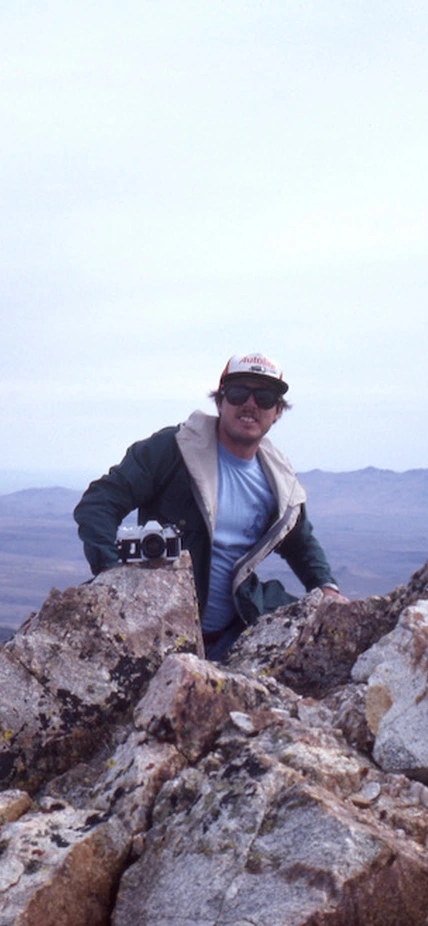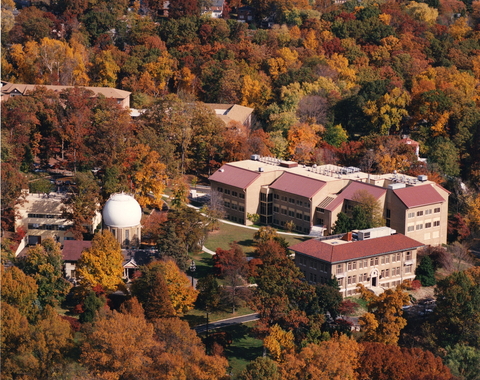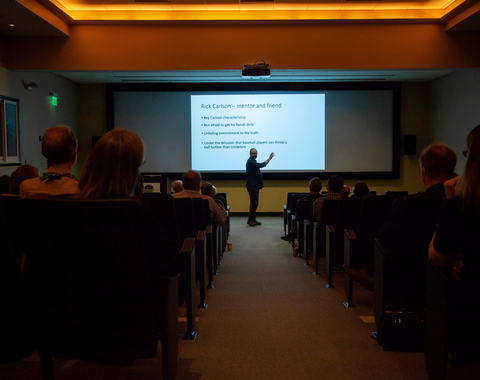As the year ends, the desire to reflect on the past always surfaces. In this letter, I’ll be looking further back than usual as my 41 years of employment as a postdoc, staff scientist, and director at the Department of Terrestrial Magnetism (DTM) and now the Earth and Planets Laboratory (EPL) are coming to a close.
The passing of the decades takes its toll in many ways, but in compensation are the experiences gained and the ability to extract the longer-term signal from the noise of daily events. Answering fundamental questions in the natural sciences involves small steps that over the decades add up to huge advances in knowledge and understanding. Integrating over my career at Carnegie, the advances that I personally find most exciting are described below. Driving many of these discoveries are the advances made in scientific instrumentation that have allowed us to address questions that simply were unapproachable 40 years ago.

In 1980, planets around other stars were science fiction. With the development of precise radial velocity measurements and then other techniques, we now know that essentially every star in the sky has a planetary system around it. Furthermore, our Solar System turns out to be the oddball among them. Improvements in telescope capabilities ranging from our own Magellan telescopes to community instruments such as Hubble and ALMA—and soon the James Webb telescope—now allow imaging of circumstellar disks at sufficient resolution to watch the process of planet formation while it is occurring.
When I arrived at DTM, the mass spectrometry facility consisted of three instruments—all built in the DTM machine shop. They were state of the art at the time, capable of producing isotope ratio precisions of 1 part in 10,000, at least when the window air conditioners in the lab were not frozen up from working too hard during the hot Washington summers. Now, former DTM postdoc Jesse Reimink and I are pursuing new ion source designs applied to a commercial mass spectrometer that we hope can push isotope ratio precisions to sub-ppm levels. This advancement along with the EPL ion probes’ ability to measure the isotopic composition of grains less than a micron in size made possible the discovery that the circumstellar disk that gave rise to the Solar System was never completely homogenized—as I was taught it was 45 years ago. With this information, we can now begin mapping the compositional heterogeneity in the disk at the time of planet formation, investigate the role of Jupiter formation in preserving it, and reveal the nature of the many stellar sources that synthesized the elements from which we are all made.

My graduate education was in the early days following the Apollo program when the field of cosmochemistry and planetary science exploded. Then, we had only lunar samples along with a few hundred meteorites available to provide clues to processes occurring off the Earth. Now, with organized meteorite collection expeditions in Antarctica and the Sahara, we have tens of thousands of extraterrestrial samples including many from Mars and large differentiated asteroids. Asteroid sample return missions, like the Hayabusa2 mission that provided the samples now being analyzed in the EPL ion probe, provide a look at some of the most primitive Solar System objects unaffected by the violence of colliding with Earth. Modern analytical capability combined with samples that span a wide range of Solar System objects provides a new opportunity to decode the steps that built our Solar System.
When modern geochronologic techniques were developed in a joint program at DTM and the Geophysical Lab (GL) in the 1950s, age precisions for old rocks were rarely better than a few tens of million years. Now we can achieve age precisions of a few tenths of a million years for objects over 4.566 billion years old. The precision of these radioactive clocks revealed that most of the important events in planet-building happened within the first 5 million years of Solar System history.

Developments in high-pressure experimental apparatus at GL by 1980 led GL Staff Scientist Joe Boyd to devise the means to determine the depth of origin of the fragments of mantle brought to the surface by explosive volcanism. A new geochronologic technique developed at DTM then allowed us to determine the age of these mantle rocks. Combining these approaches with advances in seismic imaging of Earth’s interior led by DTM seismologists allowed the 4-D mapping of the deep roots to the continents and delineation of their role in continent formation and preservation.
Now, with multi-anvil and diamond-anvil devices, experiments can mimic conditions in the deepest portions of Earth. Among many other things, this expansion in capabilities has allowed the recognition that some diamonds contain mineral inclusions deriving from depths as great as 700-800 km. When I was a student, we only knew of—and could study—materials from the upper 200 km of Earth.

While my focus here has been on instrument development and the measurements they allow, both are driven by people. As Andrew Carnegie said on the founding of the Institution, the goal of Carnegie Science should be “To discover the exceptional man in every department of study…and enable him to make the work for which he seems specially designed his life work.”
Now that we can thankfully apply this wisdom in a gender-neutral way, my fondest memory of Carnegie Science is the opportunity to work with truly outstanding people: my predecessors as DTM Director, all of whom were not only good Directors but also amazingly skilled scientists; my colleagues on the scientific staff and the many postdocs and visiting scientists from whom I have learned so much and shared so many pleasant experiences; the technical staff who made sure that our efforts produced the best results possible; the business office personnel who somehow always found ways to meet our needs; the building engineering staff who keep a now 30+-year-old facility in good operating condition; the administrative staff who created a cohesiveness in the department despite the tendency of staff scientists to get lost in their own work; and to the long list of our supporters and neighbors who followed our work with interest, even more so as the pandemic drove our outreach into virtual modes.
Given the quality of people attracted to Carnegie Science, and my very positive experience working with Mike Walter for the past few years as GL and DTM merged to form EPL, I am confident that Mike will lead EPL to the type of great discoveries that defined the remarkable histories of DTM and GL. My deepest appreciation goes to all my Carnegie colleagues for they are what makes Carnegie Science a success, and a great place to work.
Thank you all,
Richard Carlson
Director
Earth and Planets Laboratory
Read the letter from the new Director, Michael Walter




